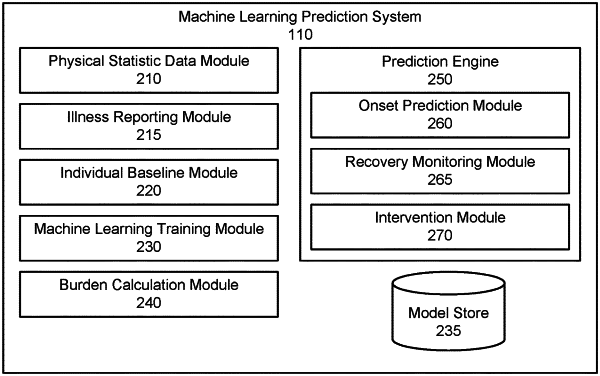| CPC G16H 50/80 (2018.01) [G06N 20/00 (2019.01); G16H 40/67 (2018.01); G16H 50/20 (2018.01); G16H 50/30 (2018.01); G16H 50/70 (2018.01)] | 21 Claims |

|
1. A method for selecting an intervention for an infectious disease, comprising:
(a) training a machine learning model using a set of training data from a first population cohort comprising a plurality of users, the set of training data comprising a confirmed case of the infectious disease of a first user of the plurality of users and wearable sensor data from the plurality of users, wearable sensor data from a first user of the plurality of users comprising physical statistics and symptoms collected over a plurality of consecutive time periods and associated with the infectious disease, wherein at least one of the consecutive time periods is prior to an onset of the infectious disease and at least one of the consecutive time periods is after the onset of the infectious disease, wherein the first user is placed in the first population cohort based at least in part on a pattern of the wearable sensor data from the first user;
(b) receiving, from a target user, physical statistics data for the target user, wherein the first population cohort comprises the target user;
(c) predicting a probability of onset of the infectious disease for the target user within a subsequent interval of time by applying the trained machine learning model to the received physical statistics data for the target user;
(d) placing the predicted probability into a group of predictions from a second population cohort comprising the target user, wherein a prediction of the group of predictions for a second user from the second population cohort is determined by performing steps (a)-(c) on the second user, wherein the second user is placed into the second population cohort based at least in part on a proximity of the second user to a plurality of additional users within the second population cohort;
(e) automatically selecting the intervention based at least in part on the group of predictions from the population cohort; and
(f) notifying the target user of the selected intervention based on the predicted probability.
|